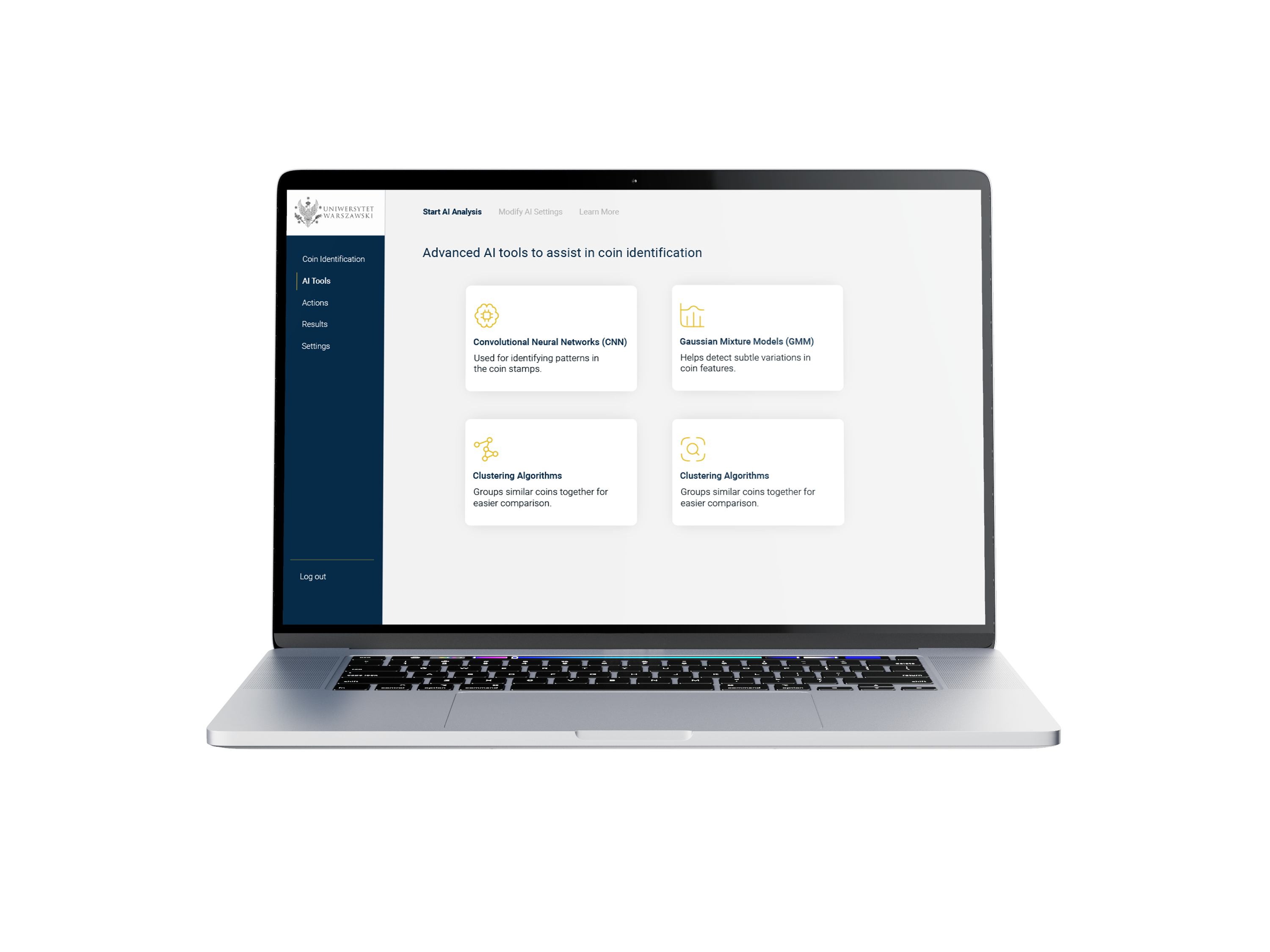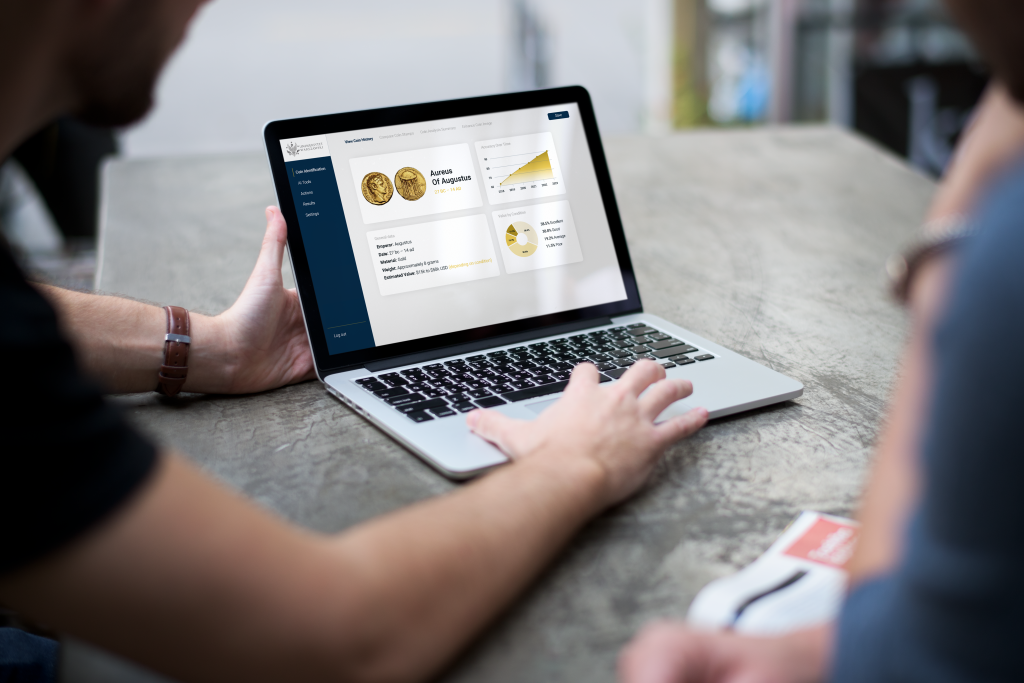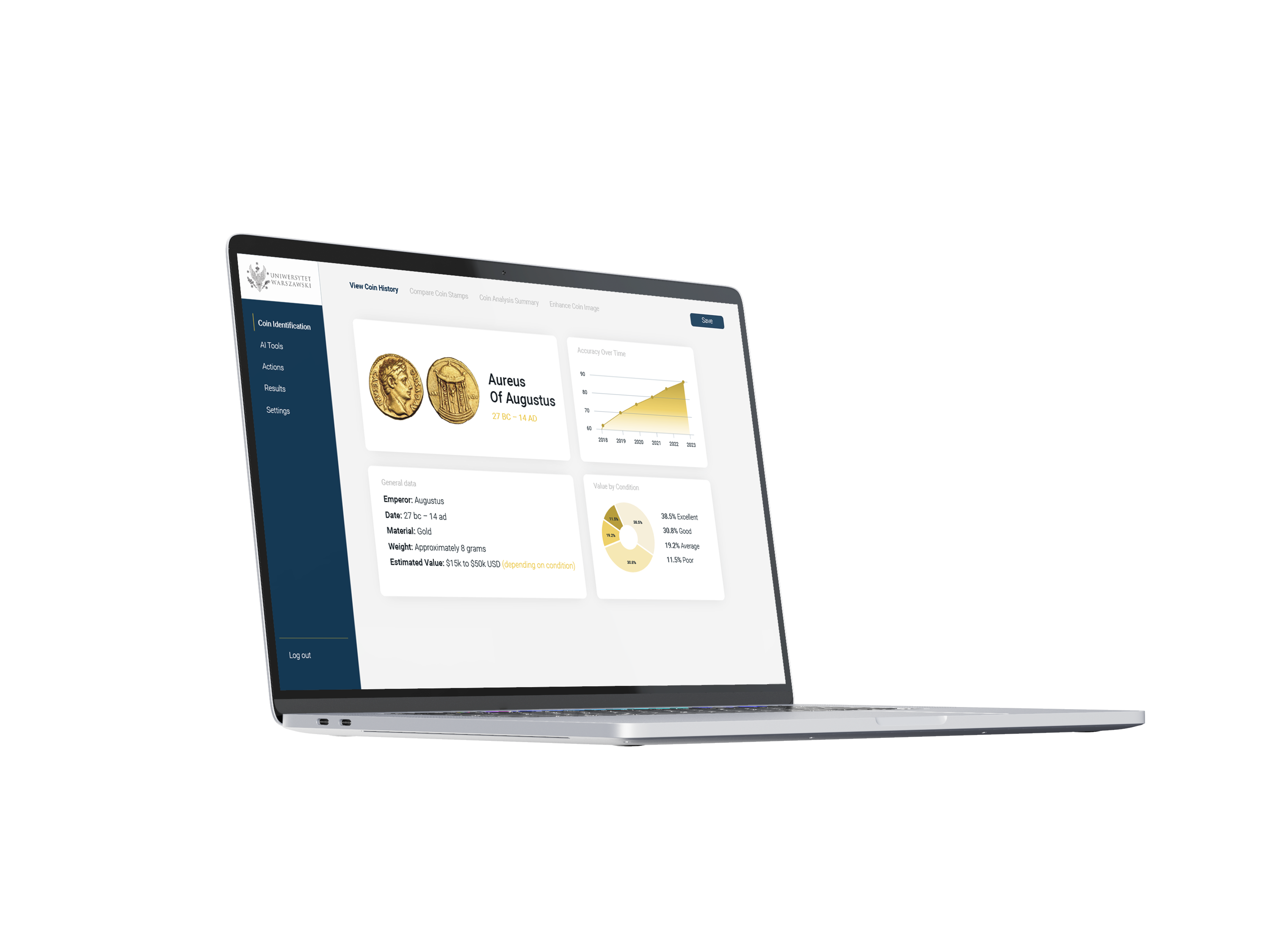
Year:
2023
Industry:
Technology Information
Country:
Poland

Objective
The primary objective of this project was to develop an advanced machine learning-based solution for the accurate identification and linking of die stamps on Roman and Byzantine coins. By leveraging a combination of supervised and unsupervised learning methods, the team aimed to create a scalable, web-based application that enhances the efficiency and accuracy of numismatic research. This solution addresses challenges in dataset diversity, enabling continuous improvement as new data is added, and supports researchers in uncovering deeper insights into ancient economic history.
Meet the Client
The client, the University of Warsaw, partnered with Leaware to advance their numismatic research on ancient Roman and Byzantine coinage. Faced with the challenges of manually identifying and linking die stamps on over 7,000 coins, the University sought a scalable and efficient solution. Their primary goal was to enhance research accuracy and streamline processes through a web-based application that employs machine learning techniques. This collaboration aimed to bring cutting-edge technology into archaeological research, improving analysis and providing deeper insights into historical economies.
Historical Background
& Current Situation

The University of Warsaw’s numismatic research focuses on analyzing Roman and Byzantine coinage, an area traditionally reliant on manual examination methods that are labor-intensive and prone to human error. Researchers aim to accurately identify and link die stamps across a dataset of over 7,000 coins, a task complicated by the diversity and uneven distribution of coins. Faced with these challenges, the University sought an automated solution to improve efficiency, precision, and scalability in their analysis, paving the way for more reliable insights into ancient economic systems.


Challenge
The project faced significant challenges, starting with a highly diverse dataset of over 7,000 Roman and Byzantine coins, representing nearly 50 different emperors. This uneven distribution created difficulties for traditional Convolutional Neural Networks (CNN), which usually require more balanced datasets for effective training. Additionally, the complexity of the coin designs further complicated accurate die-link identification. Without an automated solution, researchers risked inaccuracies, inefficiencies, and potential biases, potentially affecting the quality and reliability of numismatic analyses and historical interpretations.
Solution
To address these challenges, the team developed a web application hosted on Azure, combining front-end Angular with a C# .NET backend and Python for the machine learning components. The solution utilizes a hybrid approach with both supervised and unsupervised learning techniques. Key algorithms include K-Means for clustering, DBScan for managing noise, and Gaussian Mixtures to detect subtle patterns in coin stamps. A pre-trained Convolutional Neural Network (CNN) model further enhances feature recognition, enabling scalable and accurate identification of die-links across a diverse dataset.
Technology

Platform

Benefits of the App

Results
The application demonstrated impressive results in enhancing the accuracy and efficiency of numismatic research. Key performance metrics included the successful identification of die-links and a significant reduction in processing time compared to traditional manual methods. The system’s scalability allowed it to handle increasing data volumes seamlessly, with accuracy improving over time as new coin images were added. Preprocessing techniques, such as background removal and image cropping, were instrumental in boosting the algorithm’s effectiveness, setting a new standard for digital numismatic analysis.
Data and Evidence
Lessons Learnt
The project underscored the effectiveness of a hybrid approach, combining supervised and unsupervised learning techniques to handle diverse datasets accurately. Preprocessing methods, such as background removal and image cropping, proved crucial in enhancing model performance. Scalability emerged as a vital component, enabling the application to grow with additional data and improve over time. Tackling data diversity with techniques like Gaussian Mixtures and CNNs allowed for better management of complex datasets. Ultimately, continuous learning through data integration demonstrated significant potential for advancing numismatic research.

Ready to start your project?
Others Cases
Do you want to learn
more about this topic?
Poland
+48 223781522
ask@leaware.com
Germany, Belgium
+49 24023893009
ask@leaware.com
United Kingdom
+44 2081900354
ask@leaware.com
Denmark
+45 21671778
ask@leaware.com
Poland
+48 223781522
ask@leaware.com
Serbia
+38 1653980110
+38 163332268
ask@leaware.com
Lea sp. z o.o. z siedzibą w Toruniu, ul. Włocławska 167, 87-100 Toruń, wpisana do rejestru przedsiębiorców prowadzonego przez Sąd Rejonowy w Toruniu, VII Wydział Gospodarczy Krajowego
Rejestru Sądowego pod nr KRS 835659, NIP 9522205303, wysokość kapitału zakładowego: 5 000 zł
Germany, Belgium
+49 24023893009
ask@leaware.com
United Kingdom
+44 2081900354
ask@leaware.com
Denmark
+45 21671778
ask@leaware.com
Poland
+48 223781522
ask@leaware.com
Serbia
+38 1653980110
+38 163332268
ask@leaware.com
Lea sp. z o.o. z siedzibą w Toruniu, ul. Włocławska 167, 87-100 Toruń, wpisana do rejestru przedsiębiorców prowadzonego przez Sąd Rejonowy w Toruniu, VII Wydział Gospodarczy Krajowego
Rejestru Sądowego pod nr KRS 835659, NIP 9522205303, wysokość kapitału zakładowego: 5 000 zł